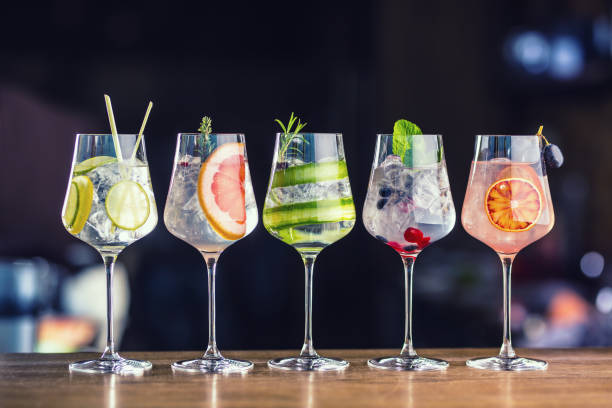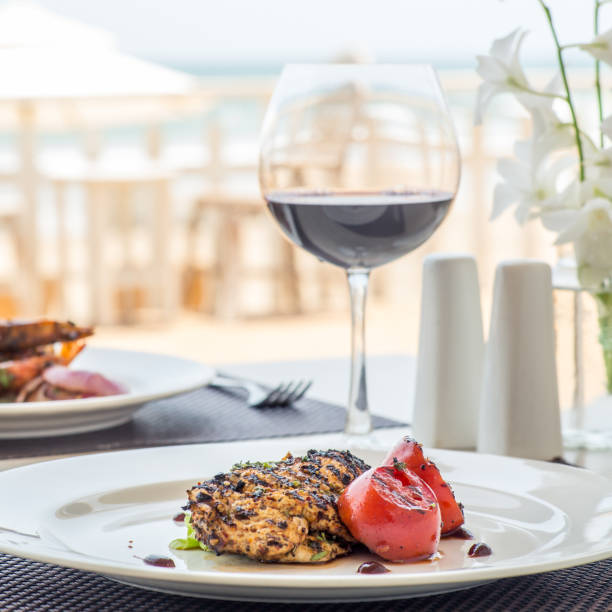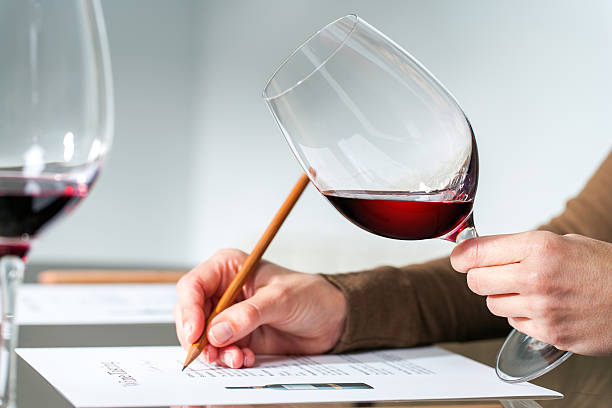“Give a man a fish and you feed him for a day. Teach a man to fish and you feed him for a lifetime”.
You have heard it several times before. It is a Chinese proverb that swiftly highlights the importance of studying, and it is an expression that can be applied to winemaking too.
Learning to fish Learn to Make Wine
This article teaches the reader “how to fish”-in a way, not literally but in the figurative sense. This article will teach you how to make your recipes for Wine instead of searching for wine recipes whenever you have a piece of fruit or an idea for a wine you would like to create.
Every wine recipe contains the same essential, specific components. We will discuss here to define and deconstruct these crucial parts, one by one, to understand better the roles each piece plays in the recipe. We will then bring them back together in a sequential fashion to help you be able to see how elements come together to create a cohesive recipe.
With a more profound knowledge of the various essential aspects of a recipe for Wine, you can make your wine recipe anytime you have got an idea. It is a great feeling!
Let me be clear; this post is quite long. However, you will find it is worth the time to read. It is, after all, the recipe that forms the foundation of every batch of Wine you ever create.
The Pieces of the Winemaking Puzzle
There are six components of a wine recipe puzzle. We will go through each one at a time. The following are the ones we will go through:
- The Produce:
The name is given to the fruits, plants, vegetables, herbs, or whatever is used to make the Wine. It could be blackberries, grapes, rhubarb, or dandelions. It may include concentrated juice, such as the SunCal, and European Select brands. The primary flavoring component of all wines is the basis of the recipe. This is the reason why Wine has its uniqueness, its body, and its personality.
- The Sugars:
The food that helps to support the fermentation. Without sugar, there is no fermentation; without fermentation, there is no alcohol.
All the sugars needed to make the typical level of alcohol (9%-13 percent) typically come from the fruit. That is the case when you ferment many kinds of grapes. However, all the required sugars could require separate supplies, like the situation with dandelion or other herbs. These products do not have sugar of their own. There are instances where sugars are obtained from the fruit, but the rest must be added for a boost. This is the typical situation for country-style fruit wines.
- The Water:
Water is frequently included in wine recipes to reduce the flavor of certain produce that is too intense or contain high levels of acid that may be excessively high. The most extreme examples of fruit are blackberries, gooseberries, and elderberries. Also, there are fruit that have sufficient water naturally in them. The flavors of these fruits are not too intense, and their acid levels are moderately high. Some examples of these kinds of fruits are grapes from Wine and apples. Although one could choose to drink water alone when eating these types of fruit to reduce body weight, it is unnecessary.
- The Nutrients:
Yeast has nutritional requirements similar to any living thing. A healthy diet is essential for successful fermentation. The product provides certain nutrients, but in most cases, the quantity or type of nutrients available through these products must be increased or adequate for the yeast to operate at its total capacity. We, therefore, add nutritional supplements, such as Yeast Nutrients, Yeast Energizers, and many more.
- The Acid:
Acidity plays a vital nutritional function in the fermentation process in that the acidity content of a must is shallow, and the process’s speed and overall quality will be affected. However, acidity plays various aspects in the winemaking process too.
Acidity is a crucial ingredient to keep the Wine from becoming unstable. If the acidity is low, microorganisms like bacteria and molds will be more likely to thrive. If it is brought to a suitable level, the possibility of these tiny creatures taking over the Wine is significantly diminished.
Acidity plays a significant part in the taste and flavor of Wine. If not enough acid is in the wine recipe, the Wine will taste flat/lifeless/flabby; too much acid tastes sharp/sour/bitter.
Most of the time, it must be too acid-free, particularly when water has been added to reduce its flavor. In these cases, we will require adding an acid blend and wine tanning in (tannic acid).
- The Yeast:
The above components create the atmosphere. The wine yeast is the thing that will perform within the setting. It is the yeast that converts sugar to alcohol. Making sure you have suitable yeast is crucial. Bread yeast is not a good choice, while beer yeast cannot cut it. You require yeast cultivated by Wine and created to be a wine yeast. It is as simple as that.
There are many options in the world of wine yeast. Each yeast has its own slightly distinct way of determining how it influences the Wine’s nature, which is the case for Our Red Star and Lalvin brands of wine yeast.
It is important to note that other ingredients, like Pectic Enzyme Campden Tablets and Potassium Sorbate, could be required when making Wine. However, these ingredients are independent of the recipe that is used. These ingredients can be utilized in the same manner regardless of the kind of Wine you are making. Therefore, we do not view these ingredients as a part of the recipe but rather take them as an element of the winemaking process. We will discuss more about them later.
Putting the Pieces Together
When trying to bring all these elements together, it is all about balance. It is about mixing them all in the right proportions to ensure that the alcohol level, flavor, body, and personality all work together to create a wine you like. Where do we begin?
Step 1: Start With the Produce
In all instances, we have to begin with the food. We must start at the beginning of the dish. Produces come in a wide variety of kinds. Certain are more well-suited to making Wine than others due to the nutrition, flavor astringency, and sugars they provide into the mix. Other varieties require to be balanced.
Here is an illustration of what I am talking about. When you consume the juice that comes from freshly squeezed grapes, it will be quite pleasing. It will be sweet, delicious, and not overly bitter or sour. However, if you consume the juice straight from fresh elderberries, you are unlikely today to need help to drink it. The flavor would be strong, and the acidity will be very sharp, nearly at the point of being bitter. However, we can make Wine using elderberries precisely like wine grapes. We accomplish this by bringing them into equilibrium with the other ingredients used in winemaking.
When making Wine using winemaking grapes, you generally use 100% juice with no water added. If you create Wine using elderberries, blackberries, and other fruits with higher acidity, diluting the juice using water is necessary. How much water you use is debatable; however, what is disputable is the necessity of the diluting process to a certain extent with these fruits.
This is a brief list of the available fruits and the amount typically included in a five-gallon wine batch. It is essential to realize that the quantity of fruits used can differ according to personal preference or the variety employed. However, going way off to these guidelines will result in trouble.
- 70-80 pounds of Wine grapes, Apples
- 40-60 pounds Table Grapes
- 30-40 pounds Muscadine, Scuppernong
- 20-40 pounds Pears
- 20-30 pounds of Wild Grapes
- 15-20 pounds of Blackberries, Blueberries, Strawberries
- 10-20 pounds of Apricots, Watermelon, Rhubarb, Honey
- 8-12 lbs Raisins, potatoes, Prickly Pear
- .5-1.5 pounds Ginger Root, Dandelions, Woodruff Herb
The list is not meant to be exhaustive but is intended to provide the range of products and the amount required to make 5 gallons of Wine. If the item you would like to use for making Wine is not listed, look at the produce with the ones similar to those listed on the list to figure out the appropriate amount.
In addition, It is important to note that the product will have to be chopped or crushed, bruised or pitted, based on the kind of produce you are dealing with.
Step 2: Add the Sugar and Water
The water is straightforward. Ensure you add enough water to bring the quantity up to 5 gallons. In some instances, this could mean there is no water, but it is about 5 Gallons in other situations.
After the water has been added, you must find out if sugar is needed for this dish. One way to determine whether sugar is required is by conducting a test on the must using the aid of a hydrometer. The hydrometer has a scale known as “Potential Alcohol.” It is a simple scale of percentages, usually ranging between 0 and 20, that tells the amount of alcohol that can be produced using the sugars currently present within the.
For example, if you place the hydrometer into the must and you get a reading of 5 percent, it signifies that the must-have has enough sugars in it to make 5 percent of alcohol.
If you are aware of the current state of your affairs, the Next step is to find the direction you want to go. For example, to go further, if it is clear that you are at a limit of alcohol at 5 percent and you want to get to 12 percent, then you must include dissolved sugar in it until your hydrometer is reading 12 on the Potential Alcohol scale.




